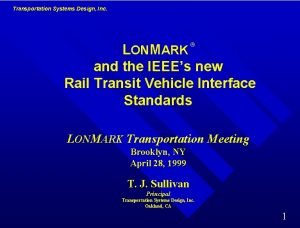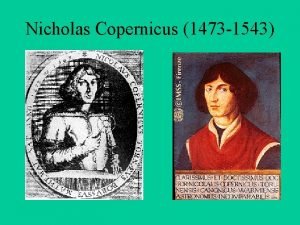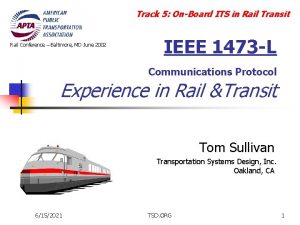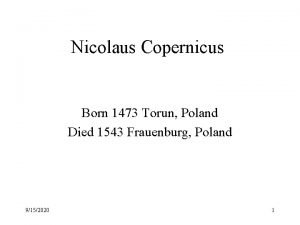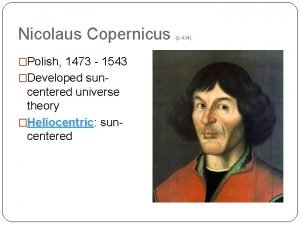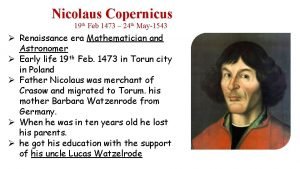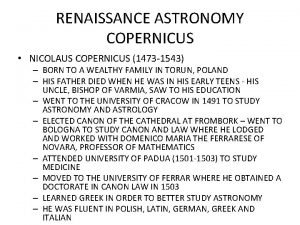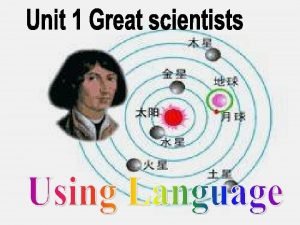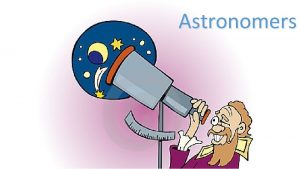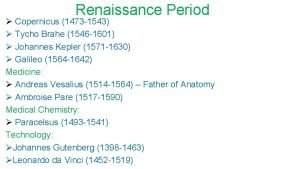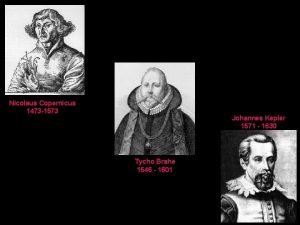History and Physics of ASTRONOMY Nicholas Copernicus 1473










- Slides: 10

History and Physics of ASTRONOMY

Nicholas Copernicus • 1473 -1543 • Contributions: demonstrated a theory that the earth and all planets revolve around the sun (heliocentric as opposed to geocentric) • In his model the planets revolve in a circular path around the sun

Tycho Brahe • 1546 -1601 • Contributions: most accurate and comprehensive observations of astronomy (planets) of the time • Proposed that the sun and moon orbit earth while other planets revolve around the sun • Hired Kepler to figure out the retrograde motion of mars

Johannes Kepler • 1571 -1630 • Contributions: three laws of planetary motion – The orbit of every planet is an ellipse with the sun at one of the two foci – A line joining a planet and the sun sweeps out equal areas during equal time intervals – The square of the orbital period of a planet is directly proportional to the cube of the semi major axis of its orbit (P 2= A 3) P=years: A=AU’s

Galileo Galilei • 1564 -1642 • Contributions: first to experiment – telescope (which he modified from Lipperchet’s spy glass) – Father of modern observational astronomy • Phases of Venus • 4 moons of Jupiter • Sunspots – Defied Catholic Church for supporting Coppernican theory

Sir Isaac Newton • • 1642 -1727 Created calculus Laws of motion (you already know) Laws of gravity F = GMa. Mb/D 2 G = 6. 67 x 10 -11 Nm 2/Kg 2

Circular Velocity • To maintain a stable orbit around earth you must be traveling ~8 km/s • Vc = GM/r (velocity = SQRT of the gravitational constant G times the mass of the planet M divided by the radius R of the orbiting object to the center of the object it is rotating around) • Or R = GM / V 2

Escape Velocity • Velocity required to break free of the gravity of whatever planet or moon (or sun) you are on • Earth’s is approximately 11, 000 m/s (25, 000 mph) • Ve = (2 GM/R) or the escape velocity equals the SQRT of 2 times the gravitational constant times the mass of the planet divided by the distance from the center of the planet

Doppler Effect

Coriolis Effect




